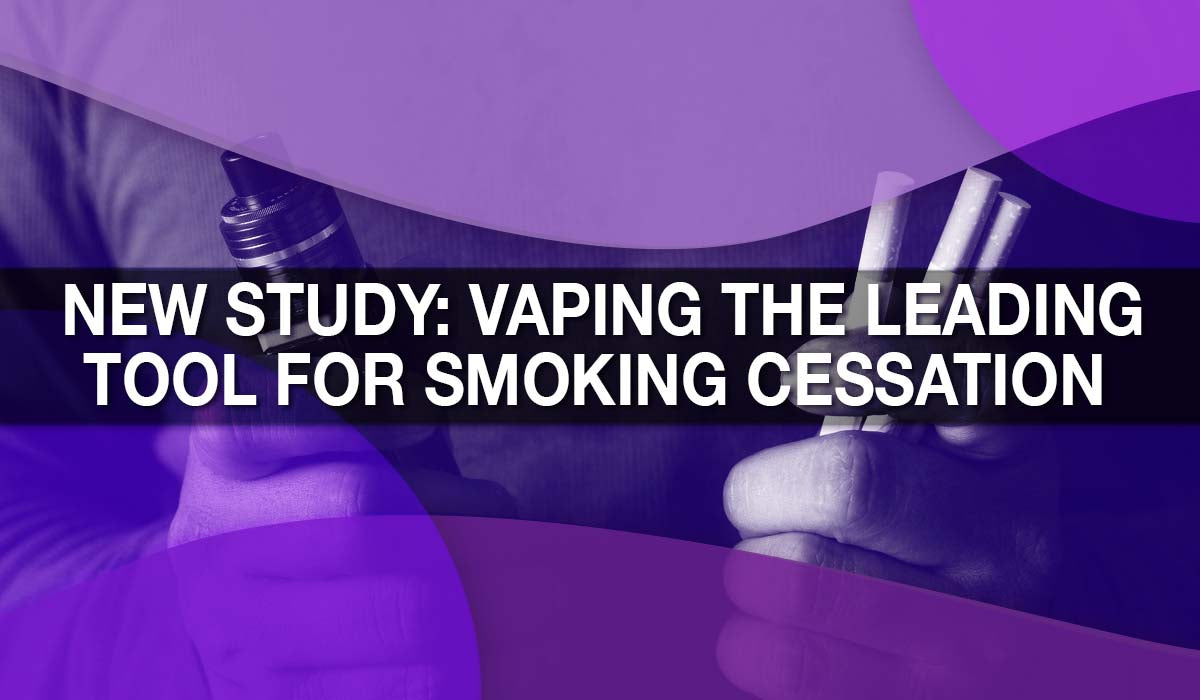
New Study: Vaping the Leading Tool for Smoking Cessation
A new study based on the 2022 National Health Interview Survey highlights the growing role of vaping in helping Americans quit smoking. The survey found that e-cigarettes were the most widely used method for smoking cessation, with approximately 1.2 million adults successfully quitting smoking entirely in the past year by using e-cigarettes. This finding underscores the importance of vaping as a harm reduction tool in combating the devastating health consequences of smoking.
The Numbers Speak for Themselves
The survey explored various methods adults used to quit smoking, including nicotine replacement therapies (NRTs) like gum and patches, prescription medications such as Chantix, and non-nicotine approaches like behavioral counseling and cold-turkey quitting. However, vaping emerged as the standout tool:
- 1.2 million adults reported that they had quit smoking completely in the last year, attributing their success to e-cigarettes.
- Other methods, including NRTs and prescription drugs, played a role for some individuals but fell short of vaping’s popularity and effectiveness.
- Behavioral and non-pharmacological approaches remained useful but lagged behind in adoption.

Why Vaping Works for Smoking Cessation
Vaping’s success as a smoking cessation tool can be attributed to several factors:
- Mimics Smoking Behavior: Unlike other methods, vaping replicates the sensory and behavioral aspects of smoking, such as hand-to-mouth motion and inhalation, making it easier for smokers to transition.
- Customizable Nicotine Levels: E-cigarettes allow users to control nicotine intake, enabling a gradual reduction over time without the abrupt withdrawal often associated with quitting.
- Wide Availability of Flavors: Flavored e-cigarettes have played a key role in helping adults quit by offering an alternative to the taste of combustible tobacco.
- Immediate Accessibility: E-cigarettes are available over the counter and don’t require a prescription, making them a convenient option for smokers look to transition away from combustibles.
The Case for Harm Reduction
The results of this study add to a growing body of evidence that vaping can serve as a critical harm reduction tool. Smoking remains the leading preventable cause of death worldwide, responsible for nearly 480,000 deaths annually in the U.S. alone. While nicotine replacement therapies and other cessation aids have been around for decades, they haven’t achieved the scale of success that vaping has demonstrated in recent years.
Countries like the UK and New Zealand have embraced vaping as a central pillar of their tobacco harm reduction strategies, encouraging smokers to switch to less harmful alternatives. These approaches have led to significant declines in smoking rates and improved public health outcomes.
A Disconnect in U.S. Tobacco Policy
Despite the clear evidence of vaping’s effectiveness, U.S. regulators have largely focused on restricting access to e-cigarettes, citing concerns about youth use. While protecting young people from nicotine addiction is a valid priority, overly restrictive policies risk denying adult smokers access to a proven cessation tool.
Instead of fostering a balanced approach that acknowledges both risks and benefits, many public health campaigns continue to equate vaping with smoking—despite the fact that numerous studies have shown e-cigarettes to be at least 95% less harmful than combustible tobacco.

What This Study Means for Public Health
The findings from the National Health Interview Survey should serve as a wake-up call for policymakers, public health officials, and healthcare providers. E-cigarettes are not a silver bullet, but they are undeniably a powerful tool in the fight against smoking-related diseases.
To maximize their potential, public health policies should:
- Promote Vaping as a Cessation Tool: Inform smokers about the relative risks of vaping versus smoking and encourage those who can’t quit through other means to consider switching.
- Protect Access for Adults: Ensure that adult smokers have access to vaping products, especially in retail environments where age verification can be enforced.
- Invest in Education: Focus on educating the public about harm reduction rather than spreading fear-based misinformation that equates vaping with smoking.
- Target Youth Use Through Enforcement, Not Prohibition: Strictly regulate the sale of vaping products to minors while avoiding broad bans that harm adult smokers seeking alternatives.
A Brighter Future
This study reinforces what millions of former smokers already know: vaping can change lives. For the 1.2 million Americans who quit smoking completely in 2022 using e-cigarettes, vaping was more than a tool—it was a lifeline.
As the tobacco control landscape evolves, it’s essential to ensure that policies reflect the realities of harm reduction. Smoking-related deaths remain a public health crisis, but tools like e-cigarettes offer a viable solution. Embracing vaping as part of a comprehensive strategy to reduce smoking rates could save countless lives—and bring us closer to a smoke-free future.









Leave a comment
This site is protected by hCaptcha and the hCaptcha Privacy Policy and Terms of Service apply.